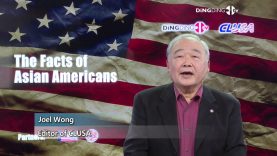Who are Asian-Pacific Islanders Americans?
The 1980 US Census categorized Asian American and Pacific Islanders into 4 categories:
East Asians: Chinese, Japanese, Korean ….
South Asians: Indian, Pakistani, Sri Lanka…
South East Asians: Filipino, Vietnamese, Hmong, Indonesians…
Pacific Islander: Guam, Samoa, Fiji, Marianas….
Asians have been in the US from the very beginning. In 1849, the Chinese came here during the Gold Rush. They didn’t get rich but stayed on to help build the Intercontinental railroad. In May 2019, our country will be celebrating the 150th Anniversary of the completion of the railroad that connected the East and the West Coast.
1882 marked the passage of the Chinese Exclusion Act and the Japanese immigrated to fill some of the farm jobs.
Filipinos immigrated in 4 waves, as US Nationals and as veterans of the US Army forces after WWII.
The 1965 Immigration and Nationality Act was a direct result of Civil Rights movements lead by Martin Luther King Jr.
The Hart Celler Act allow immigrants other than European to enter the US and gain citizenship.
The Asian population grew from less than 1 million to over 22 million today.
Up till 1968 Asians did not have a collective identity. The different ethnic groups (Chinese, Japanese, Filipino, etc.) live their lives separated and in isolation of each other. When the Japanese were interned during WWII, the Chinese and the Koreans wore signs to “advertise” that they are not Japanese.
The word Asian American was coined by Yuji Ishioka and Emma Gee (UC Berkeley) and Ronald Quidachay (SF State) to highlight our common heritage and thus the term “Asian American” was born and first used in the 1980 US Census.






